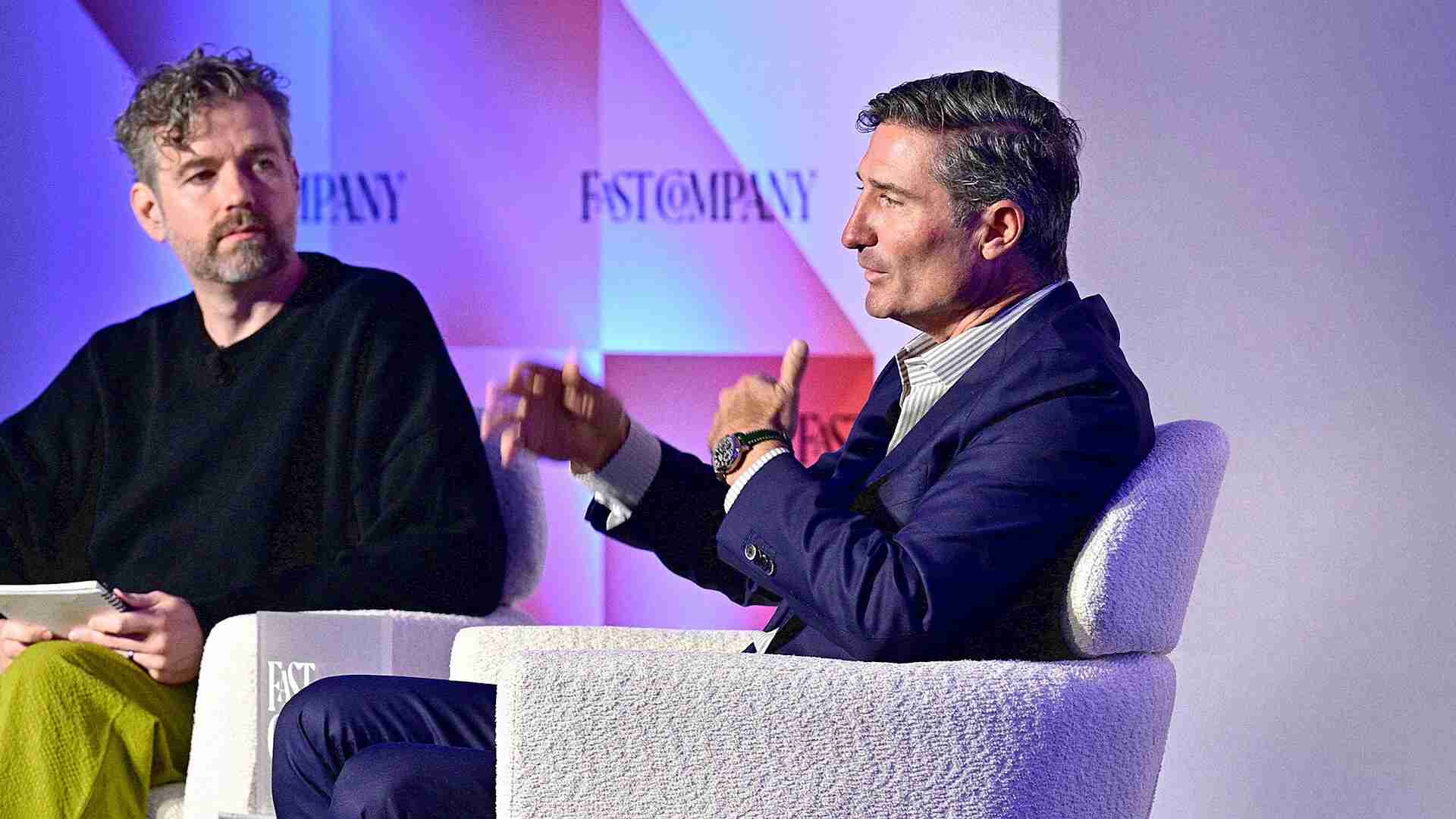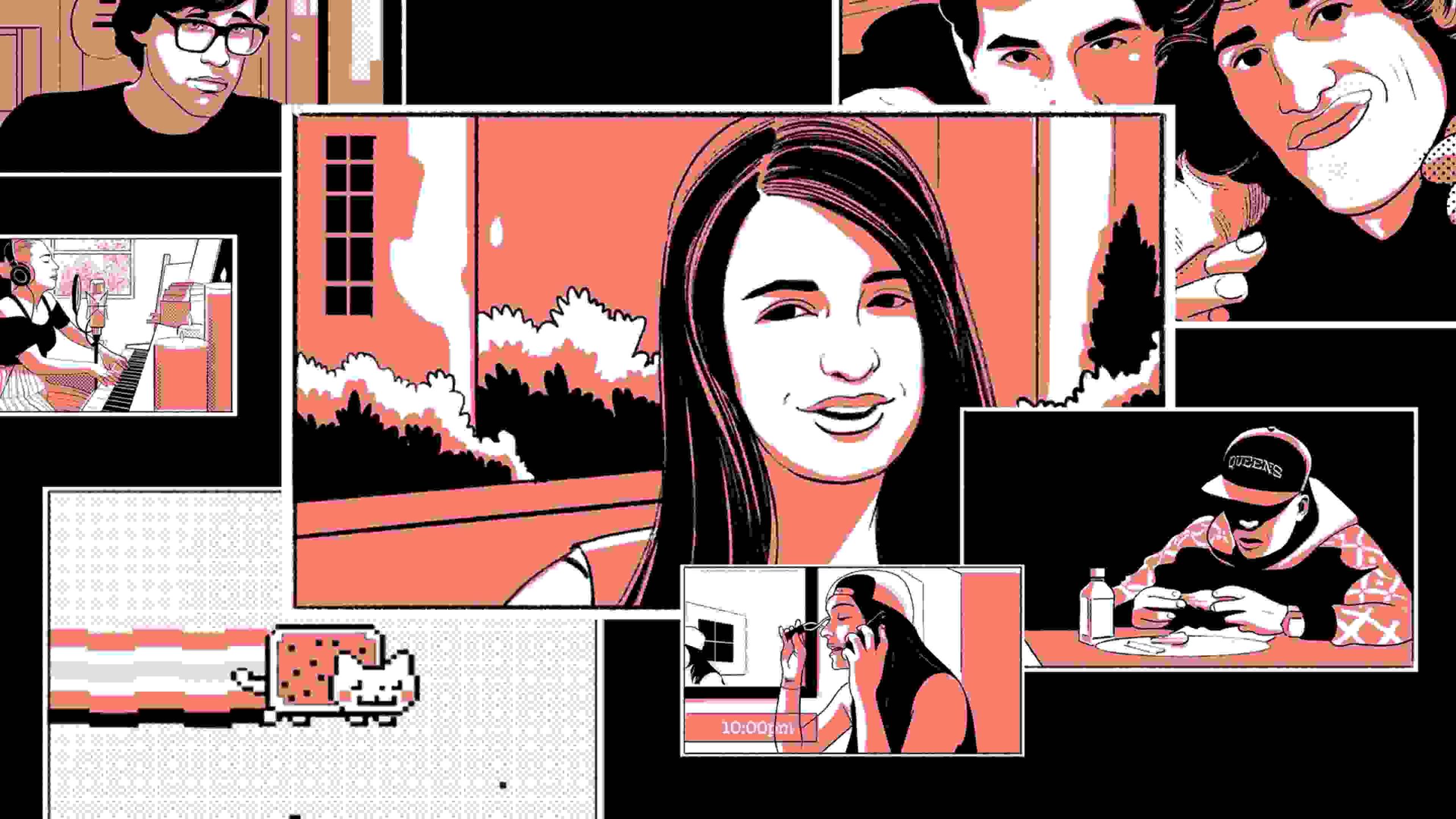- | 8:00 am
How AI could power advertising’s next creative revolution
Agencies see artificial intelligence as a chance to make themselves invaluable by marrying these tools with proprietary data to unlock a new wave of imaginative expression.

Little more than a month after OpenAI’s generative AI chatbot ChatGPT went viral for its ability to write essays and poems, all in humanlike text, Ryan Reynolds did what he does best and played it for an advertising gag. In an ad for Mint Mobile, he asked ChatGPT to write a commercial in his voice, with a checklist of using a joke, a curse word, and letting people know about Mint’s holiday promotion. The result, in Reynolds’s IRL words, was “eerie” and “mildly terrifying.”
Although very funny and true to form, it also embodied a broader impression of how advertising embraces anything new with a predictably gimmick-led frivolity.
As with seemingly every creative industry (including journalism), the introduction of ChatGPT last fall kicked off within the advertising industry a larger conversation about whether large language models and generative AI were friend or foe. There are doomsayers who view it as a threat to their very livelihood—ads made by machines!—while others see a unique opportunity to become more effective creative partners for brands.
With AI hype continuing unabated and the ad world somewhat quiet, at least publicly, about what AI means for its future, I spoke to some of its leading experimenters and strategists to get a sense of whether AI is viewed as just a gimmick to riff off, an existential threat, or something else entirely.
Dickon Laws, Ogilvy’s global head of innovation, offers an instructive framework for the narrative arc around new technologies and how they’re adopted that serves as an effective mental model for how creative agencies should be approaching AI adoption. It starts, he says, with the Magpie Moment, when something new and shiny gets our attention. Then comes the Napster Moment, when we get super excited by the technology because it’s new—and maybe doing something a little bit illicit. Next comes the Cambridge Analytica Moment, the WTF moment when the tech gets abused, and legislation, regulation, and compliance enter the picture. Finally, there’s the Spotify Moment, when the technology is normalized and viewed mainly in terms of the benefit it provides.
“We’re going through that curve at the moment,” Laws says, “and we’ve got to protect our clients from being too caught up in the Magpie and Napster moments, to evade the Cambridge Analytica moment, and get to the Spotify moment with minimum brand risk.”
With the market for AI in marketing predicted to be more than $35 billion next year and some experts expecting that to exceed $100 billion before the end of this decade, the challenge to navigate without incident from Magpie to Spotify is profound. This applies not only to individual agencies but also to the entire advertising and marketing world. The current state of play is more encouraging than skeptics might expect of an industry that’s no longer considered at the leading edge of innovation and cultural cachet. But it’s also not as far past the dabbling and strategy stage as it should be given the speed at which AI adoption and capabilities are accelerating.
CHANGE, NOT DIE
AKQA, a WPP-owned global agency network that’s perhaps best known for its rise to global player from its digital shop roots in the early 2000s, has been playing around with creative uses for AI for a number of years. In 2019, the agency fed a neural network short descriptions and rules from roughly 400 different sports, then refined the results to create a whole new sport called Speedgate. More recently, as generative AI tools have entered the mainstream, it used them last summer to create work for Nike featuring Serena Williams.
In December, as AI mania took off in the wake of ChatGPT’s launch, the agency turned GoFundMe’s traditional year-end digital report into an art-inspired film called Help Changes Everything. It worked with the L.A.-based AI artist and director Paul Trillo to generate the campaign’s visuals, using a combination of OpenAI’s DALL-E and its rival image generator Stable Diffusion to do so.
AKQA founder and CEO Ajaz Ahmed says that the cost of the work was 65% less than if it had been done using conventional means. “A project like that just wouldn’t have been possible for GoFundMe prior to having access to these new tools,” he says. “And the speed in which we could have done a project like that would have taken a year or more, but it took a fraction of the time, at a fraction of the cost, because we’re employing the new tools.”
So for Ahmed, the rise of AI is a boon to his firm’s ability to serve a wider array of clients—and a broader spectrum of budgets—while delivering work that can be produced more quickly so as to hit the cultural zeitgeist.
“AI is changing the way agencies and clients work, and it’s not going to eliminate them,” Ahmed says. “We see the use of these tools as liberating and democratizing creativity, because it means that a lot of the routine tasks can now be done by machine, so we can put more of our effort into imagination and ideation rather than being swept up in elements of production that can be automated incredibly cost effectively.”
OKAY, COMPUTER
That desire to hand off the drudge work to AI is animating much of the industry.
Nilesh Ashra, founder and CEO of OK Tomorrow, a consultancy that creates content on new tech and cultural trends for brands and companies, sees the challenge facing creative marketers and ad agencies like so: Imagine they could make exactly what they’re making today, but with way less effort. What do they do with all that spare energy?
“If you’re a senior marketer today, and you see how distracting, chaotic, and confusing the creative advertising landscape is, and then you look at how hard talent retention and culture has been these last few years, there is going to be a future where we all have a very capable assistant,” says Ashra, who just so happens to have a bachelor’s degree in artificial intelligence and spent the better part of a decade leading creative technology at Wieden+Kennedy.
“If that starts by lifting all the grunt work of administration and operational management,” he adds, “it should clear space for the most valuable product in our industry, which is original thinking.”
Similarly, Mike Creighton, director of experience innovation at the Stagwell-owned digital shop Instrument, which works with such brands as Nike, Salesforce, and Levi’s, says that after looking at how these tools can help with various administrative duties, the biggest unlock in how they think about AI isn’t how it can be used directly to create new work, but how it can help in the existing creative process.
Creighton sees generative AI like ChatGPT as an incredibly powerful, always-on creative assistant.
“It’s not about saying, ‘Write me some copy.’ It’s about, “Okay, I need to understand this concept better, how can I rephrase this thing so that my audience can understand it?’ All of a sudden, you’ve got this wonderful thing and you can tell it what you want it to be,” Creighton says.
Instrument teams use tools like ChatGPT, DALL-E, Stable Diffusion, and Midjourney to rapidly and efficiently create storyboards. “It’s a really quick way to communicate an idea because you’re using words you have, attributes in your head, you have feelings in your head, and it’s just such a great way to output that stuff,” he says. “That becomes a significant jumping-off point for additional creativity. That’s the real power of it. It’s not about the output right now. It’s . . . the creative process that makes this so special.”
IT’S BUSINESS TIME
The agencies that are truly working to integrate these tools across their organization are finding that it’s not just changing how their creative teams work, but how they’re working with other parts of the business. Ogilvy’s Laws says that there is now a more important role for the legal and commercial and compliance teams. The lack of regulation around AI and the ethics of how generative AI uses data means that legal teams who traditionally have served more of a support function within the agency now need to work much more closely with clients and creative teams so that they don’t walk into a minefield around what led an AI to produce a given image and who holds the rights to that source material.
Looking ahead, all the agency sources I spoke to were most excited about how they will soon be able to train these generative AI tools on proprietary data from their brand clients and their own body of work in order to create even more customized results.
“We can train it on Ogilvy’s own culture and philosophies about how we think about creativity,” Laws says. “Then our AI becomes a tool that clients and brands will buy into because actually it’s a differentiator for us rather than just being, ‘Oh, anybody could have plugged this into Midjourney.’ We’ve got to think about things in an independent way.”
While many in marketing and advertising see this as a transformational time for their industry that is progressing incredibly quickly, there is still trepidation in some circles as to how it should be used. Unlike the digital, mobile, or even social eras, when it was more about the platforms on which their work would appear, this new era cuts to how they function to create that work in the first place.
OK Tomorrow’s Ashra advises any agency or creative person to start experimenting now—or risk becoming the next Kodak or Blockbuster.
“This isn’t technology that you can easily explain how it works, and I think that’s a bit of a wall, but I would encourage anyone not to let the technology narrative drive your decision-making here,” he says. “If you’re making stuff, either at an organizational or a personal level, it’s really important to jump in. The barrier to entry is so comically low, you just have to press a button to get into it.”








































